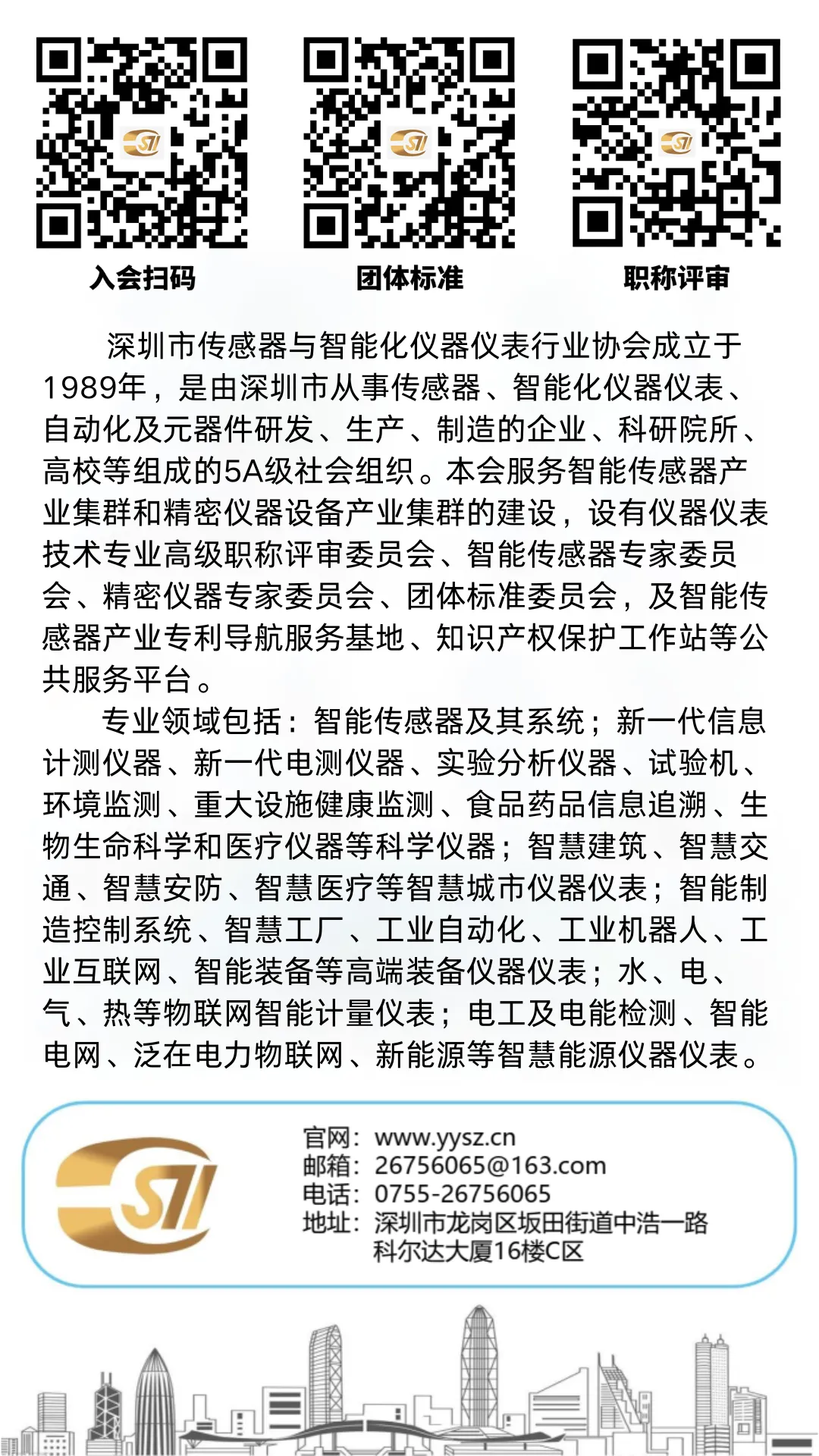
In the modern industrial field, precise measuring tools are crucial for ensuring production safety, improving product quality, and achieving efficient operations. The industrial-grade true RMS digital multimeter, as a key tool in the field of electronic measurement, has gradually become an essential tool for electronic engineers and electricians due to its multifunctionality and high precision.
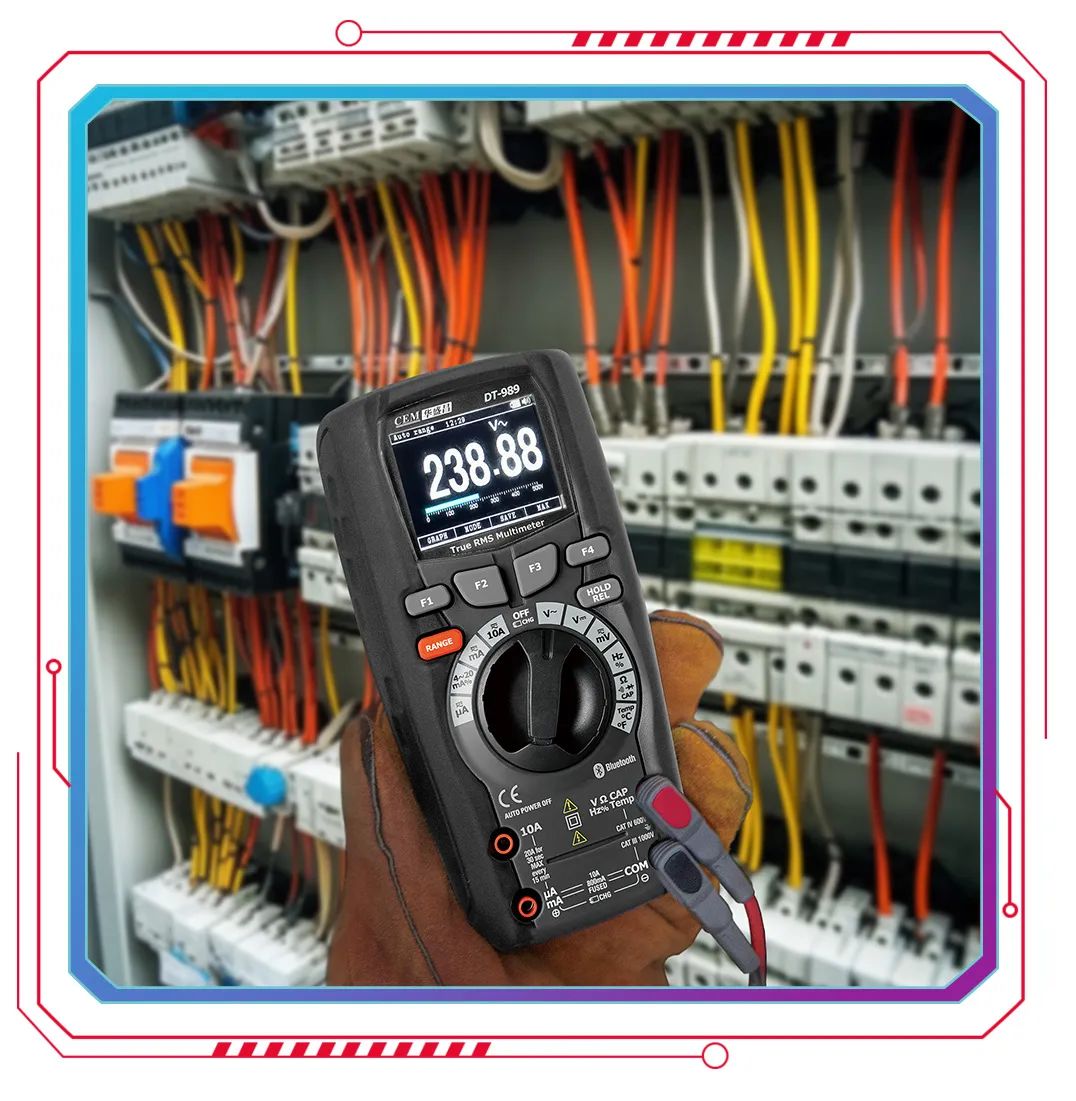
1. CEM “Quick Understanding” Knowledge
1
Industrial-grade true RMS digital multimeter
This type of multimeter is a professional measuring tool designed to adapt to complex industrial environments. It features true RMS measurement capabilities, allowing for precise measurement of various complex waveform signals, including non-sinusoidal waves, ensuring that results are closer to actual values and meeting the stringent accuracy requirements of the industry.
In addition to basic voltage, current, and resistance measurements, it also offers rich functionalities such as capacitance, frequency, duty cycle, temperature, diode testing, and continuity testing, while complying with strict safety standards and certifications, making it a powerful assistant for equipment debugging, maintenance, and fault diagnosis in industrial production.
2
Instrument Principle
When the probes are connected to the circuit being measured, the electrical signal is introduced into the input section of the multimeter through the probes and test leads. The input electrical signal is conditioned and amplified by the signal conditioning circuit before being sent to the A/D conversion circuit for analog-to-digital conversion. The digital signal post A/D conversion is received by the microprocessor, which processes and calculates it to achieve various measurement functions. The microprocessor converts the measurement results into signals that can be recognized by the display screen, driving the display screen to show measurement results and various parameter information through the display driver circuit.
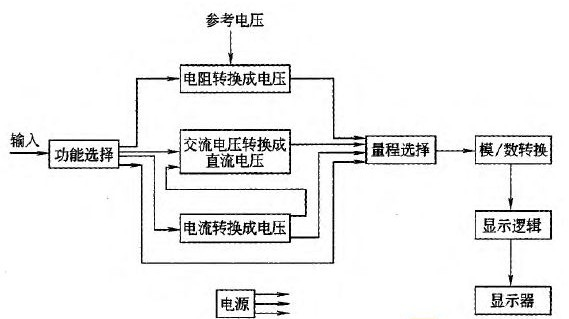
The true RMS measurement principle involves squaring, integrating, and taking the square root of the AC signal to obtain the true RMS value of the AC signal. This measurement method is not affected by the waveform of the AC signal and can accurately measure the effective value of various non-sinusoidal AC signals.
3
Selection Points
1) Accuracy
The accuracy of a digital multimeter is the combination of systematic and random errors in the measurement results, reflecting the quality and craftsmanship of the multimeter. It indicates the degree of consistency between the measured value and the true value, and also reflects the magnitude of the measurement error.
2) Resolution
The resolution is the voltage value corresponding to the last digit in the lowest voltage range of the digital multimeter, reflecting the sensitivity of the instrument. Different digit counts of digital multimeters can achieve different maximum resolution indicators, with resolution improving as the display digit count increases.
The resolution indicator can also be displayed as resolution, which refers to the percentage of the smallest number (excluding zero) that the instrument can display to the maximum number.
Resolution and accuracy are two different concepts. Resolution characterizes the instrument’s “sensitivity,” or its ability to “recognize” small voltages; accuracy reflects the “accuracy” of the measurement, or the degree of consistency between the measurement result and the true value. From a measurement perspective, resolution is a “virtual” indicator (unrelated to measurement error), while accuracy is a “real” indicator (it determines the size of measurement error). Therefore, the approach of simply increasing the display digit count to improve instrument resolution is not advisable.
3) Measurement Range
In multifunctional digital multimeters, different functions have their corresponding maximum and minimum measurable values.
4) Measurement Rate
The measurement rate of a digital multimeter, expressed in “times/s,” refers to the number of measurements per second of the quantity being measured. It mainly depends on the conversion rate of the A/D converter. Some handheld digital multimeters use measurement cycle to express the speed of measurement, where the time required to complete one measurement process is called the measurement cycle.
5) Input Impedance
When measuring voltage, the instrument should have a very high input impedance, so that during the measurement process, the current drawn from the circuit being measured is minimal, which will not affect the operation of the circuit or signal source, thereby reducing measurement errors.
When measuring current, the instrument should have a very low input impedance, which minimizes the instrument’s impact on the circuit being measured. However, when using the current range of the multimeter, due to the lower input impedance, there is a higher risk of damaging the instrument, and users should exercise caution.
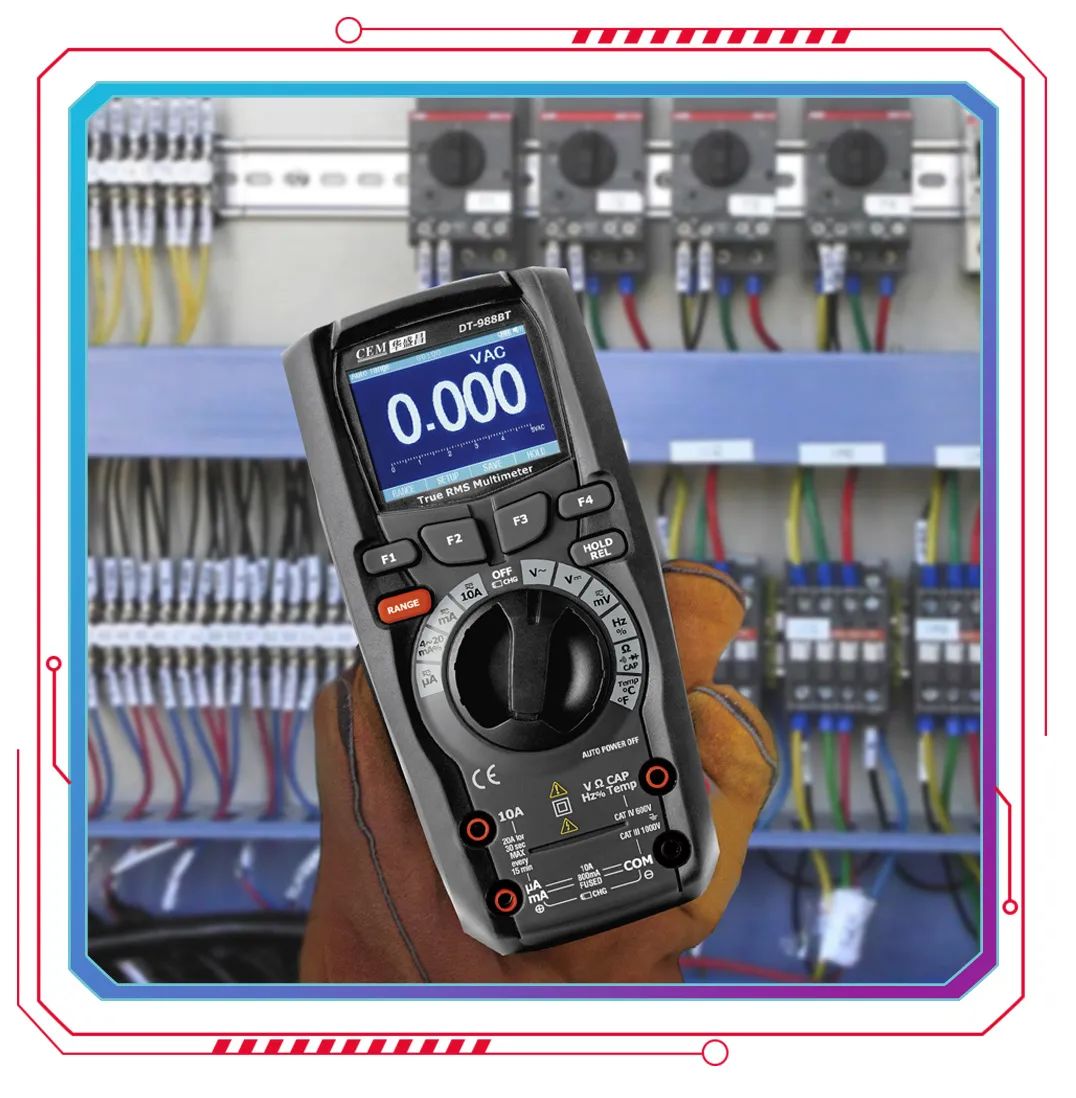
4
Precautions
1) Check the Range First: Before measuring, always ensure that the correct measurement range is selected to avoid damaging the multimeter or obtaining incorrect measurement results due to improper range selection.
2) Do Not Change Ranges During Measurement: Do not arbitrarily adjust the selector knob during measurement, especially when measuring high voltage (e.g., 220V) or high current (e.g., 0.5A), to avoid generating arcs and damaging the switch contacts.
3) Choose an Appropriate Range: If the size of the quantity to be measured cannot be estimated beforehand, try to select a larger range first, then gradually switch to a smaller range based on the deflection angle until the pointer deflects to about 2/3 of the full scale.
4) Correctly Insert Probes: Insert the probes into the correct sockets according to different measurement functions.
5) Disconnect Power for Resistance Measurement: Ensure that the circuit being measured is powered off when measuring resistance to avoid damaging the multimeter and causing danger.

2. Product Recommendations
1
Product Overview
DT-988BT/989/989H is a series of industrial-grade professional color screen true RMS digital multimeters newly designed, developed, and produced by Huashengchang, featuring dual-injection molded casing, color screen design, true RMS measurement, Bluetooth communication, and a maximum display of 50,000 counts, meeting the user needs for high precision and complex environment measurements.

2
Product Parameters
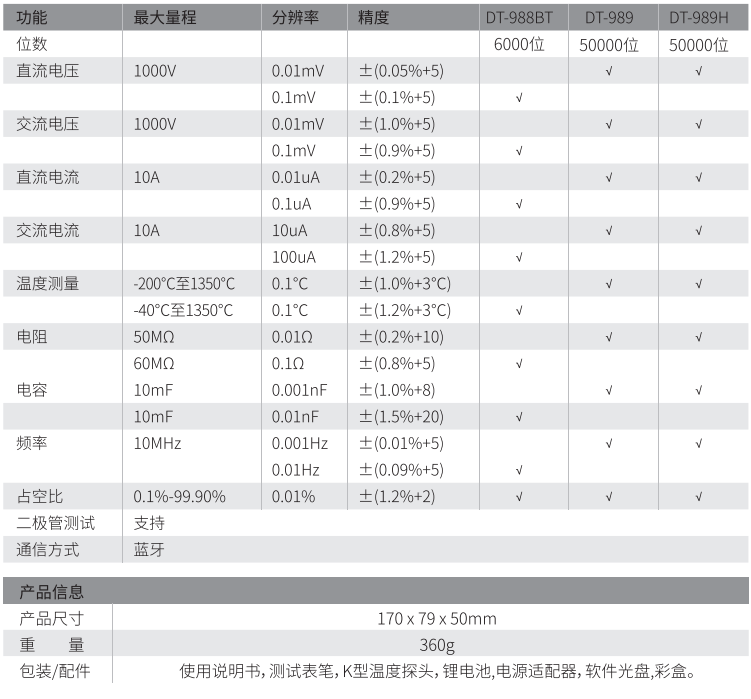
3
Product Advantages
1) Comprehensive Functions: Equipped with basic functions such as voltage, current, resistance, capacitance, frequency, diode testing, rapid A/D conversion sampling, etc.;
2) True RMS Measurement: 50,000 counts (DT-989/989H), 0.1% high-precision true RMS measurement, capable of accurately measuring non-sinusoidal signals;
3) Peak Hold Function: Can record transients as fast as 250us;
4) K-Type Thermocouple Temperature Measurement: Range up to 1350℃, suitable for daily measurement tasks such as air conditioning maintenance;
5) Trend Capture Function: Can monitor and record signal changes over time and form trend graphs for easy comparison, storing 100 historical data points, aiding in tracking circuit changes and troubleshooting;
6) Bluetooth Communication Function: Provides MeteriMM software, cloud services, and Bluetooth communication for convenient real-time data transmission and recording, improving work efficiency;
7) Safety Level: Complies with international safety standards CAT III 1000V, CAT IV 600V;
4
Product Applications
1) Power Construction:
During the construction process of new power facilities, the multimeter can be used to check the continuity and insulation resistance of cables, ensuring correct cable installation and no short circuits; measuring and debugging parameters such as voltage and current for transformers, switch cabinets, etc., to ensure normal operation of the equipment.
2) Electrical Equipment Maintenance:
Various electrical equipment in factories, such as motors, inverters, PLC controllers, etc., require regular maintenance and testing. The multimeter can accurately measure parameters such as voltage, current, and resistance, determining whether the equipment operates normally and timely detecting potential faults.
3) Petrochemical and Metallurgical Industry:
High-temperature furnaces and electric furnaces in smelting plants require precise temperature control and power supply. The multimeter can be used to check the output signals of temperature sensors, thermocouples, and other temperature measuring devices, as well as parameters such as heating current and voltage of electric furnaces, ensuring the smooth progress of the smelting process.
4) HVAC Field:
Devices such as compressors, fans, and motors in air conditioning systems require regular maintenance and inspection. In the maintenance of central air conditioning systems, technicians can use the multimeter to monitor the operating current of the compressor, timely detecting potential faults in the compressor.
5) Research and Experimentation:
In laboratories of universities and research institutions, researchers often need to conduct various electrical experiments and tests. The multimeter can provide accurate measurement data, helping researchers verify experimental results.




